site search
online catalog
ABRAHAM LINCOLN SIGNED COMMISSION OF COLONEL JOHN S. CLARK, AIDE-DE-CAMP AND HEAD OF INTELLIGENCE FOR GENERAL BANKS
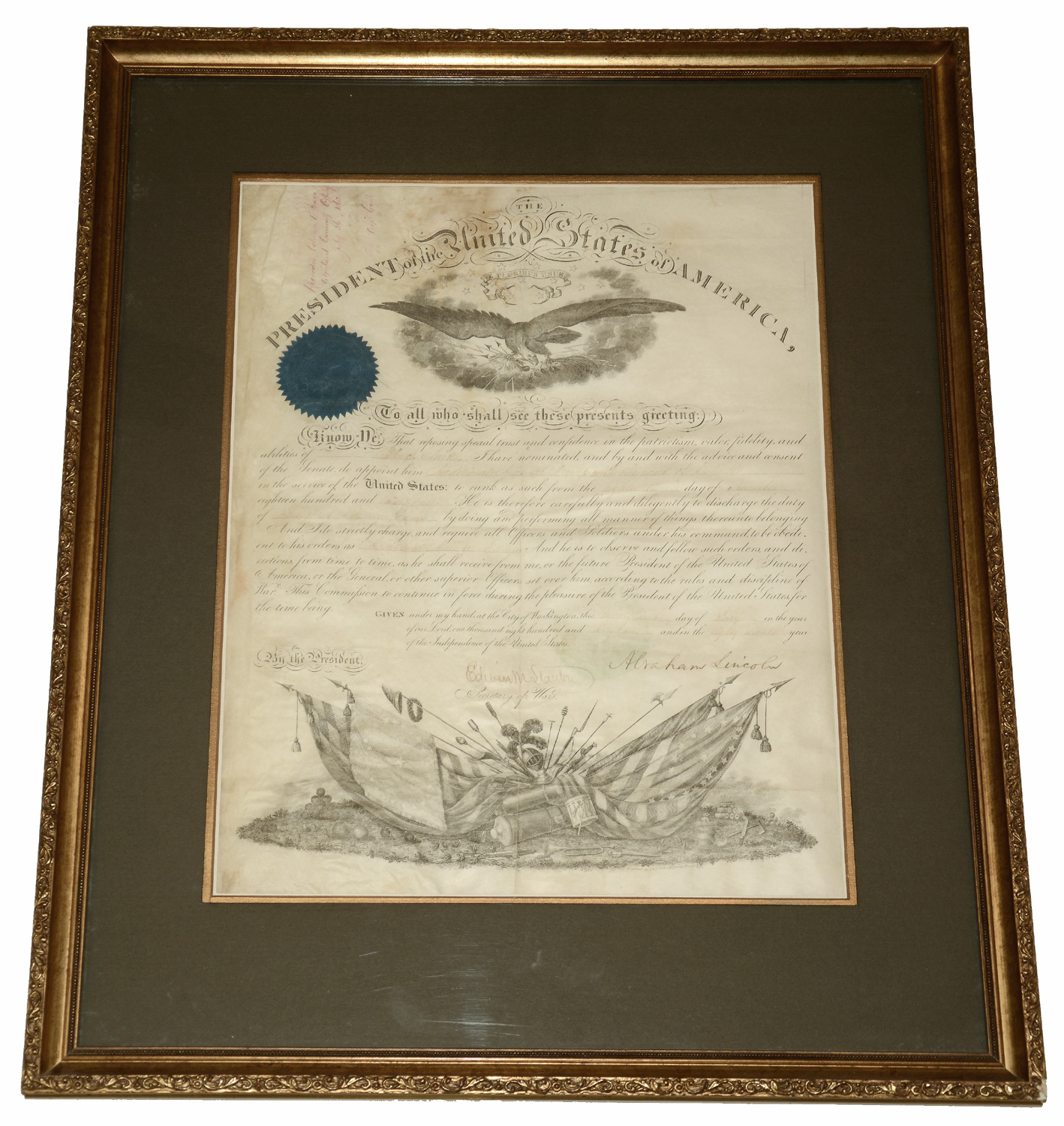
Hover to zoom

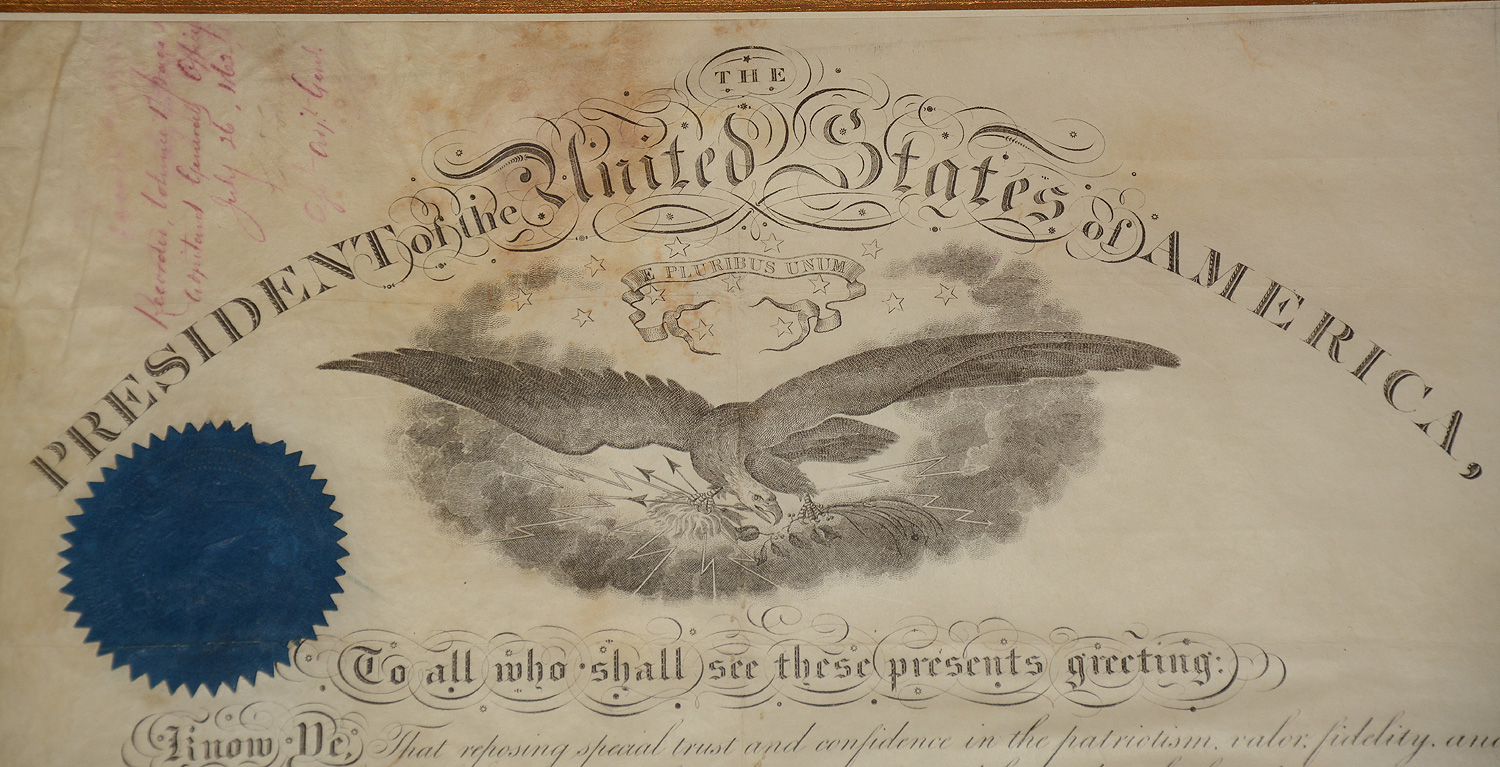
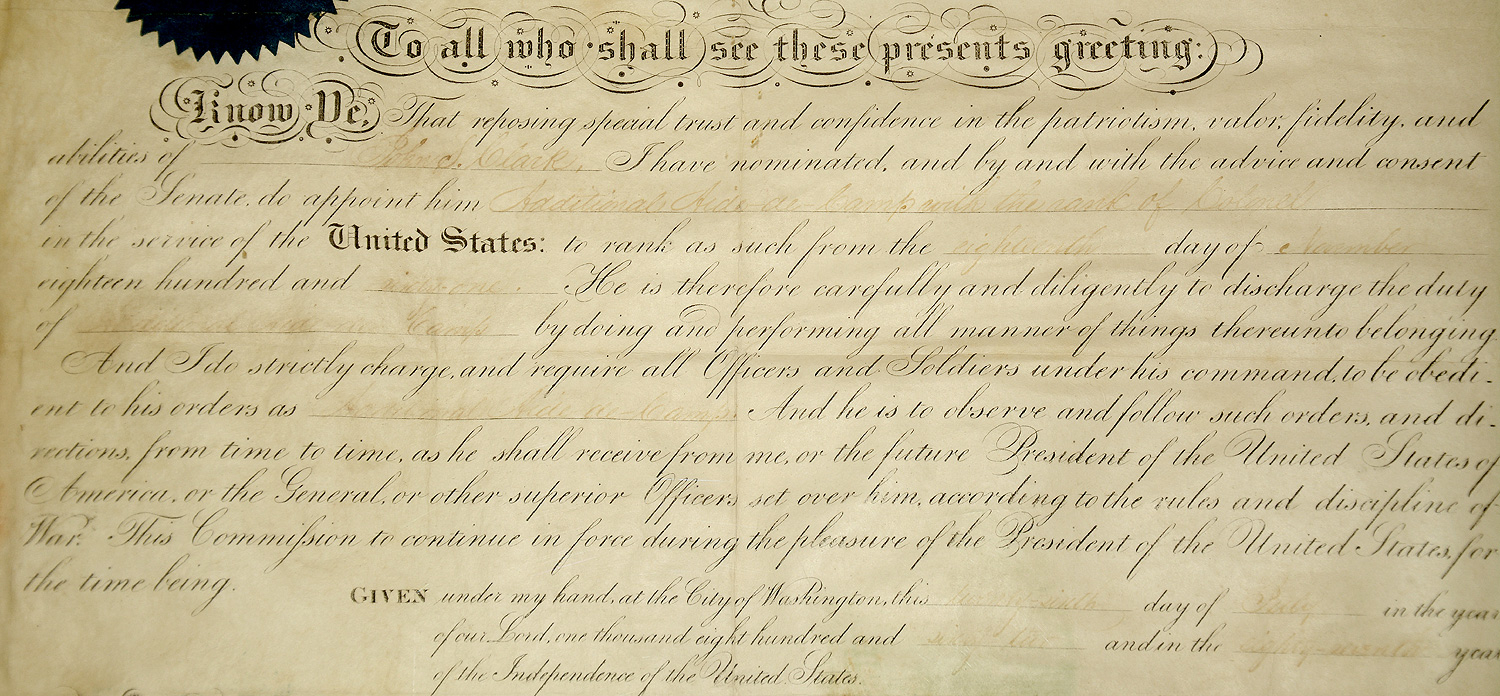

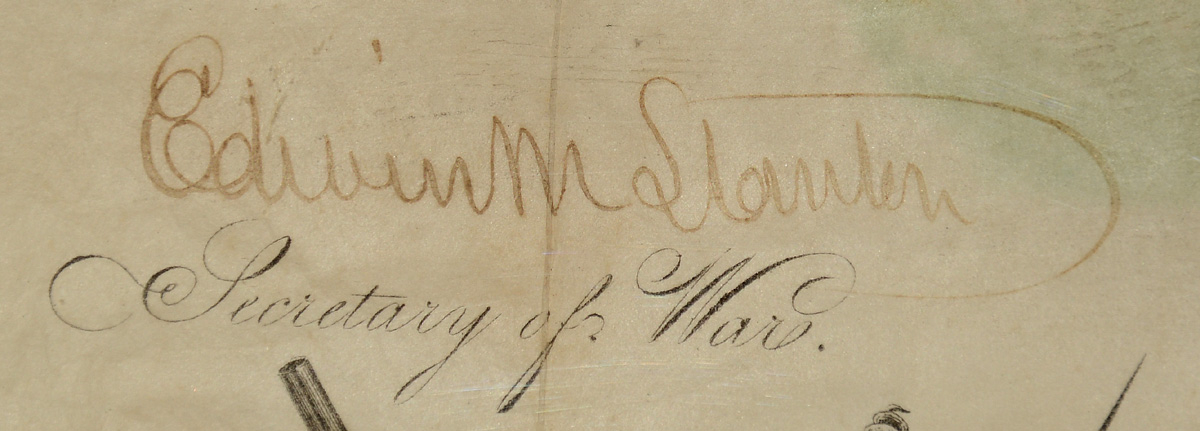
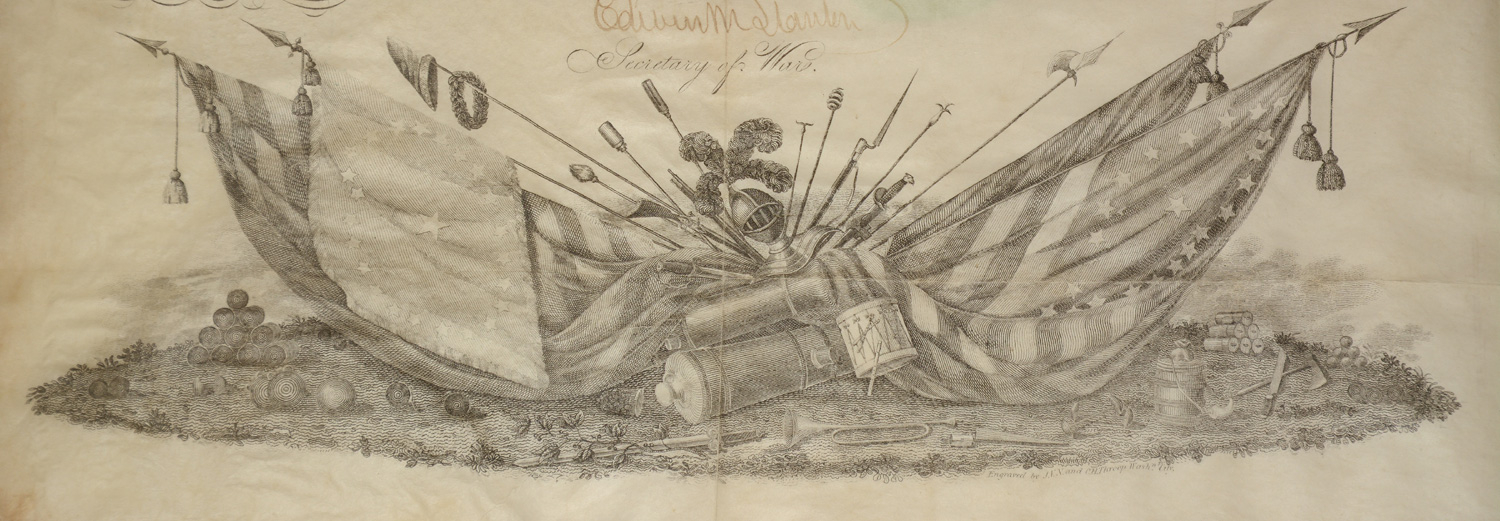
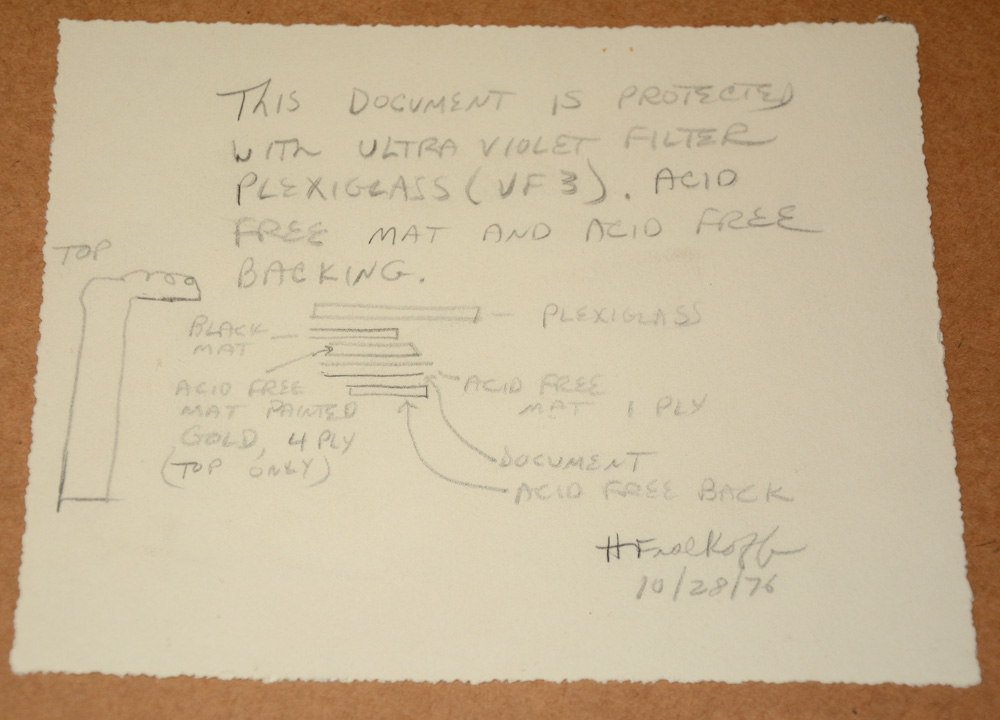
$7,500.00 SOLD
Quantity Available: None
Item Code: 1161-01
John Swartout Smith Clark, known more simply as John S. Clark, was born for intelligence work: “In my school days all intricate questions were referred to me, on the theory that anything I did not know, I would find out, which caused many a sleepless night.” He added to this a knowledge of surveying and map-making, and a hands-on approach that led to a serious leg wound while reconnoitering Confederate fortifications at Port Hudson in March 1863, which he had also observed earlier while accompanying paroled and exchanged prisoners there on a truce boat. During earlier service in Virginia, he pioneered the systematic individual questioning of Confederate prisoners to establish tables of organization and unit strengths, supervised scouts, personally visited signal stations to use as observation posts.
Nothing was fool-proof, of course. His estimates of Lee’s army included some non-existent regiments and late in the Red River campaign he, with others, was taken in by Dick Taylor’s shenanigans, but his estimates were far more accurate than more famous figures such as Alan Pinkerton. Nor could he control how his information was used. He personally observed and counted Jackson’s forces on their march against Pope’s rear at Second Manassas, and was told by Gen. Banks the government would be indebted for his saving the army, but Pope came away with the impression Jackson might also be headed for the Shenandoah, an uncertainty only resolved by Jackson’s attack shortly after.
Born 2 November 1823 in Throopsville, NY, and educated at Bethany College in Virginia, Clark was adopted by his maternal grandfather, took that family name in 1835, inherited a substantial farm and fortune in 1842, became a prominent member of the Auburn, NY, community and friends with the Seward family. On his return from dropping off a son at Annapolis in April 1861, he carried word to then Secretary of State Seward of the situation in Baltimore, and then joined 300 volunteers to protect the White House and Navy Yard. He was afterward tasked with carrying dispatches to Butler at Annapolis, which required avoiding secessionist pickets and crossing the Patunxet River on a log (by one account.) He returned to New York by May 18, when he joined the 19th New York Volunteers, then organizing at Elmira, having been chosen during his absence by a committee of officers and community leaders as its colonel. He led the regiment until resigning November 18, 1861, a mutually agreeable decision since they resented him as “imperious” and he thought them mutinous. He was immediately offered appointment as Aide-de-Camp with the rank of colonel on the staff of General Nathaniel Banks, the division commander, and it is his commission for this rank and post we offer here.
Few seem to have had a higher opinion of his impressive energy and abilities than Clark himself, but Banks was impressed and used Clark’s almost obsessive-compulsive quest for knowledge and attention to detail to make him his de-facto chief of intelligence. Banks noted in July 1862, “He has great aptitude for the acquisition of intelligence and the management of scouts, and I have charged him with this duty…” noting after Antietam that Clark had, “given much attention to obtaining information of the organization, movements and purposes of the Rebel Army…” It also did not hurt that Clark’s connections with Seward helped in the ongoing fighting among rival Union generals: Clark could act as Banks’ advocate and his more realistic estimates of enemy forces may have undercut some of McClellan’s stalling.
Clark also accumulated substantial field experience and Banks kept him by his side throughout his service in Virginia and in Louisiana as commander of the Department of the Gulf. In a letter of recommendation to Lincoln in late 1862, Banks noted Clark had been present at “both battles at Winchester” (perhaps meaning Kernstown as well as Winchester,) and in late 1864 added Cedar Mountain and Second Manassas as battle honors, as well as noting his wounding in March 1863 at Port Hudson, and presence at actions in the Red River Campaign of 1864 at Carroll’s Mill, Wilson’s Farm, Sabine Crossroads, Pleasant Hill, Pleasant Grove, and Monet’s Ferry.
Banks and Pope had written in support of a promotion for Clark as early as December 1864, but the issue was pressed at war’s end when Clark was about to resign and Seward’s son pushed his father to talk to Secretary of War Stanton about it. Clark received a brevet to brigadier general of volunteers in August 1865 to date March 13, 1865, for “faithful and meritorious services during the war.” Pope, perhaps regretting he had listened more carefully to Clark, had written, “I know no officer whom I consider as competent for the discharge of the special duties to which he has devoted his attention since he has served in the Army…”
As energetic and inquisitive as ever after leaving the army, Clark devoted his considerable energies to civil engineering, horticulture, entomology, and historical research on Jesuit Missions and the Iroquois. He died in 1912, the last sixteen months of his life spent as an invalid, but ensconced in his library, which he had converted to a bedroom. His substantial archives are now in a local historical society.
We are pleased to offer Clark’s Lincoln-signed commission as “Additional Aide-de-Camp with the rank of Colonel,” beautifully and archivally mounted and framed. This is signed by both Lincoln and Secretary of War Edwin Stanton at the bottom, dated July 26, 1862, giving Clark rank from November 18, 1861. The filled-in information on Clark’s rank, dates of appointment, etc., are light, but legible. The Lincoln and Stanton signatures, though, are visible, legible, and strong, though touched slightly by some blue bleed-through from the blue seal at top left of the document when it was folded. Clark is one of the more interesting figures we have come across recently, with an intriguing service record that includes much behind-the-scenes field work and substantial political connections and maneuvering. [sr] [ph:L]
May require extra shipping charge (frame measures 20" x 24.5").
~~~~~~~~~~~~~~~~~~~~~~~~~~~~~~~~~~~
THIS ITEM, AS WITH ALL OTHER ITEMS AVAILABLE ON OUR WEB SITE,
MAY BE PURCHASED THROUGH OUR LAYAWAY PROGRAM.
FOR OUR POLICIES AND TERMS,
CLICK ON ‘CONTACT US’ AT THE TOP OF ANY PAGE ON THE SITE,
THEN ON ‘LAYAWAY POLICY’.
THANK YOU!
Inquire About ABRAHAM LINCOLN SIGNED COMMISSION OF COLONEL JOHN S. CLARK, AIDE-DE-CAMP AND HEAD OF INTELLIGENCE FOR GENERAL BANKS
Most Popular
Historical Firearms Stolen From The National Civil War Museum In Harrisburg, Pa »
Theft From Gravesite Of Gen. John Reynolds »
Selection Of Unframed Prints By Don Troiani »
Fine Condition Brass Infantry Bugle Insignia »
Large English Bowie Knife With Sheath 1870’S – 1880’S »
Imported (Clauberg) Us Model 1860 Light Cavalry Officer's Saber »
featured item
HANDSOME INSCRIBED MOORE REVOLVER WITH HOLSTER OF C.H. RICHMOND
Moore revolvers used the .32 caliber self-contained metallic rimfire cartridge, which was available and convenient. They were not subject to damage by rough handling, weather resistant, and made a pistol fast to load. Moore also provided value for… (2023-2603). Learn More »


